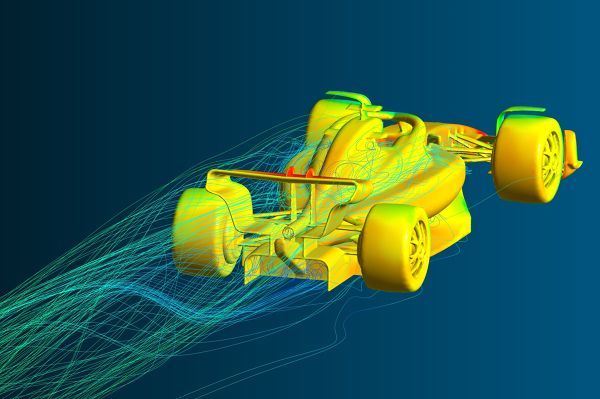When it comes to speed and precision in motorsports, few competitions can rival the breathtaking world of Formula 1. While the drivers showcase their skills on the track, behind the scenes, another critical element drives their success: aerodynamics. In this article, we delve into the captivating world of F1 aerodynamics, exploring the cutting-edge technologies and intricate designs that make these racing machines true engineering marvels.
The Importance of Aerodynamics in Formula 1
Aerodynamics is the study of how air interacts with objects in motion. In Formula 1, optimizing aerodynamic performance is paramount because it directly affects speed, handling, and fuel efficiency. By manipulating airflow around the car, engineers strive to generate maximum downforce, which increases traction and allows for higher cornering speeds. At the same time, minimizing drag is crucial to achieving blistering straight-line speeds.
F1: Design Elements and Components
The aerodynamic design of an F1 car comprises several key elements. The front wing, for example, plays a vital role in directing air over and around the car. Its complex shape creates vortices that manage the airflow and provide downforce. The rear wing, on the other hand, balances downforce and drag, generating a high-pressure zone above the car and a low-pressure zone below it. This design creates the desired effect of “sucking” the car onto the track.
To further enhance performance, engineers employ various components such as bargeboards, turning vanes, and diffusers. Bargeboards are small vertical panels mounted on the side of the car, manipulating airflow to optimize downforce and stability. Turning vanes, located under the nose of the car, direct airflow around the wheels, reducing drag. Meanwhile, the diffuser at the rear of the car accelerates air underneath, creating a low-pressure zone and further increasing downforce.
F1: Advanced Simulation and Wind Tunnel Testing
Developing an F1 car’s aerodynamics is a complex process that relies heavily on advanced simulation techniques and wind tunnel testing. Computational Fluid Dynamics (CFD) simulations help engineers visualize and analyze the airflow patterns around the car, guiding them in refining the design to maximize performance. These simulations allow for rapid iterations and optimization before physical testing.
Wind tunnel testing remains a crucial tool in aerodynamic development. F1 teams utilize sophisticated wind tunnels to replicate real-world conditions and measure the aerodynamic forces acting on the car. By adjusting various parameters, such as ride height, yaw angle, and wing angles, engineers can identify the optimal configuration that delivers the highest performance.
Regulations and Evolving Designs
To maintain a level playing field and prevent excessive spending, F1 imposes strict regulations on aerodynamic design. These rules govern aspects such as wing dimensions, bodywork shapes, and overall downforce levels. However, within these constraints, engineers constantly push the boundaries of innovation, seeking to find every possible advantage.
Over the years, F1 aerodynamic designs have evolved significantly. As technology advances and computational power increases, teams are able to explore increasingly intricate and sophisticated designs. From the introduction of the iconic “shark fin” engine cover to the implementation of complex front wing endplates and aerodynamically shaped mirrors, every component is meticulously optimized to maximize performance.
F1 Aerodynamics Education
F1 aerodynamics education plays a vital role in shaping the next generation of engineers and designers in the field of motorsports. Recognizing the importance of aerodynamics in achieving optimal performance, many universities and educational institutions offer specialized programs and courses that focus on this discipline. These educational initiatives provide students with a comprehensive understanding of the principles and techniques involved in F1 aerodynamics.
These programs typically cover topics such as fluid dynamics, computational fluid dynamics (CFD), wind tunnel testing, and aerodynamic design principles. Students gain hands-on experience through practical projects and simulations, where they can apply their knowledge to real-world scenarios. Additionally, collaborations between academic institutions and F1 teams or industry experts provide students with invaluable opportunities for internships, research, and practical exposure to cutting-edge technologies and advancements in the field.
By nurturing a new generation of aerodynamics experts, F1 aerodynamics education contributes to the continual innovation and advancement of the sport. Graduates from these programs bring fresh perspectives and ideas to the industry, driving forward developments in aerodynamic design, simulation techniques, and optimization strategies. Ultimately, F1 aerodynamics education fosters a talent pipeline that ensures the sport remains at the forefront of technological advancements and maintains its position as the pinnacle of motorsport.
Formula 1 aerodynamics represent a captivating blend of science, artistry, and engineering. The quest for speed and performance drives constant innovation and refinement in this field. By harnessing the forces of air, teams strive to gain an edge over their competitors, balancing the pursuit of downforce and minimizing drag. As technology continues to advance, and regulations challenge engineers to find creative solutions within constraints, the aerodynamic side of F1 will continue to captivate enthusiasts and serve as a testament to the remarkable achievements in the world of motorsport.
